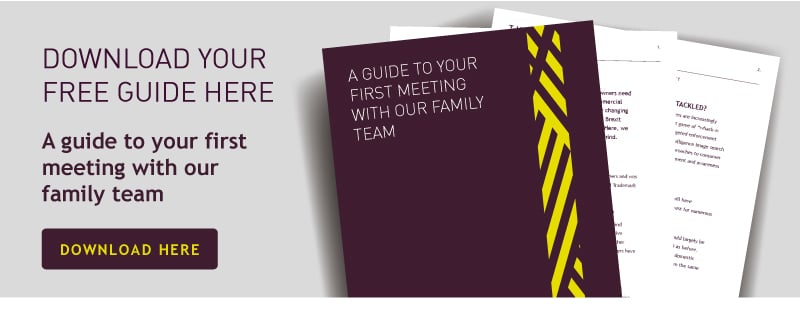If you’re going through a divorce, it’s helpful to prepare an anchor statement with your solicitor. Here’s what that entails.
At any stage of matrimonial proceedings or couple separation, it is very easy for a person to lose perspective. People going through a divorce face major pressures, and as the situation unfolds, a number of questions and concerns come to the surface. ‘Will I lose my home?’ ‘Will I see my children?’ ‘How will I cope financially?’ These are all just some of the common fears people encounter.
The role of law is not just to divide the assets and set boundaries. Contrary to popular belief, it is not even to remove the emotion from the situation. Rather, we see our role, as solicitors, as understanding these feelings and apprehensions and guiding clients through the difficult process.
The emotional curve of separation
We know from experience that people going through divorce often go through an ‘emotional curve’, similar to that of bereavement. An initial response to a marriage breakdown may cause shock. This can last a long time, or be short lived, and is easily replaced by anger and bitterness. The next stage is a numbness, often known as ‘the doldrums’, as that person comes to the realisation and understanding the relationship really is over, whatever efforts have been made. Finally, the upwards side of the curve takes shape, where they experience the pragmatism and energy to get things sorted and to get back on with life.
Quite often, even the party who ends the relationship goes through these emotions, as they process what is happening with their lives.
Maintaining perspective through divorce
Whilst both parties are going through some form of emotion on the curve, they won’t necessarily be at the same place. And even with the best intentions in the world, either side of the party can easily slip back into past bitterness.
It is very difficult for some people who have mentally moved on to understand that their estranged partner is stuck in shock or anger and can’t possibly see a way out. There needs to be an understanding that the other may be much further behind, which solicitors have a duty to instil.
Solicitors should help each person move forward in a way that feels supportive and constructive. It is not helpful to push people through a process that is too difficult or painful – and solicitors should read the signs about whether or not they are ready. This is particularly important when it comes to entering into collaborative negotiations, which require a good deal of perspective.

Using the anchor statement effectively
This is where we find drawing up an anchor statement useful. An anchor statement’s purpose is to manage how the divorce is settled. Each party is encouraged to note down their values for the process and their overarching aims. Some people will be money-driven. Others might want to remain friends, especially if they have children together. Cementing these values helps to keep the process focused and ensure fluctuating emotions don’t affect the overall success of proceedings. Clients can also refer back to the statements if and when the situation becomes tough.
The act of writing the statement can be grounding in itself. It can help clients to pause and rationalise what is most important to them, how they would like the process to continue, and what they feel their priorities are for the legal outcome or perhaps with key relationships.
Preparing an anchor statement
For some people, writing the anchor statement can be a source of worry or nervousness. However, it can be one of the most helpful steps in moving forward. Our solicitors are here work closely with anyone going through a divorce. We’ll ask the important questions and provide clarity and support to those going through life-changing decisions.
If you would like to know about anchor statements or any part of the divorce process, please contact Fiona Kellow or any of the Thrings Family team.

